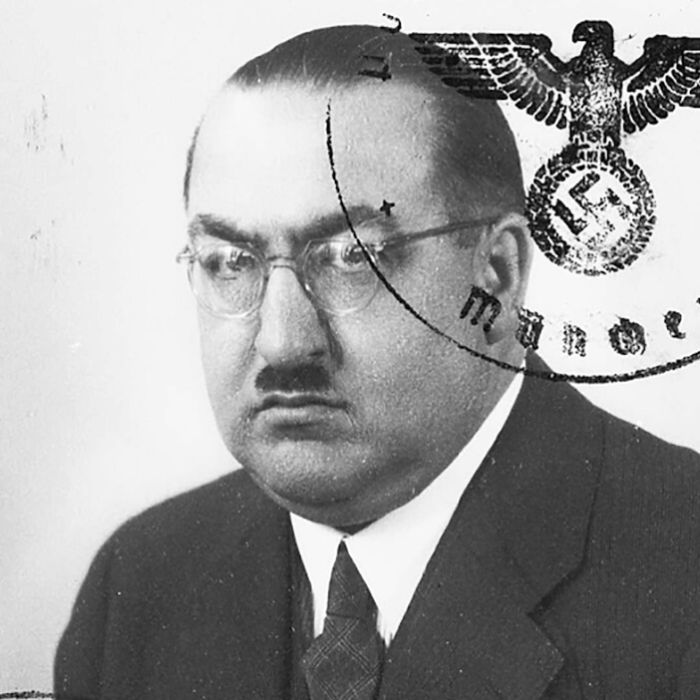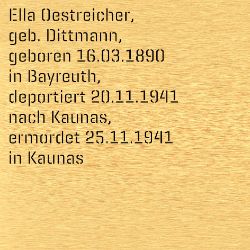Friedrich Oestreicher was born on November 16, 1885 in Munich to the wool and fur wholesaler August Oestreicher and his wife Louise, née Hofmann. He completed a commercial apprenticeship in Trieste and from 1910 ran the company “H. Oestreicher & Söhne, Felle- und Lederfabrikation” in the building he owned at Klenzestraße 37. In 1914 Friedrich Oestreicher married Ella Dittmann; they moved into Widenmayerstraße 36. In the course of the “Kristallnacht” pogroms on November 9, 1938 Friedrich Oestreicher was taken to Dachau concentration camp. While there, on November 19, 1938, he was forced to sign a sale contract for the building at Klenzestraße 37 and to dissolve his business. From 1939 Friedrich and Ella Oestreicher tried in vain to arrange emigration to the USA. In February 1941 the couple had to leave their apartment and move in to the “Pension International” in Kaulbachstraße 35. Friedrich Oestreicher was deported from the Milbertshofen freight station to Kaunas in Lithuania on November 20, 1941, together with his wife and about 1,000 other Jewish men, women and children. The original destination was to be Riga, but because the ghetto there was overcrowded, the train was diverted. On November 25, 1941 SS men, headed by SS-Standartenführer Karl Jäger, shot Friedrich Oestreicher and the other deportees from Munich in Fort IX in Kaunas. Friedrich Oestreicher’s siblings also did not survive the Holocaust. His sister Berta and her husband Gustav Dan Midas were deported to Piaski on April 4, 1942. Their exact fate is unknown. On November 29, 1942 Friedrich Oestreicher’s brother Herbert was deported to Riga and murdered. All that remains of the family is the grave of Friedrich Oestreicher’s parents, who had died in 1910 and 1914. Their tombstone in the Old Jewish Cemetery in Munich bears a decorative metal plate. One can still see today that someone tried to forcibly remove it. (text Thomas Nowotny, editor C. Fritsche, translation T. Axelrod)





